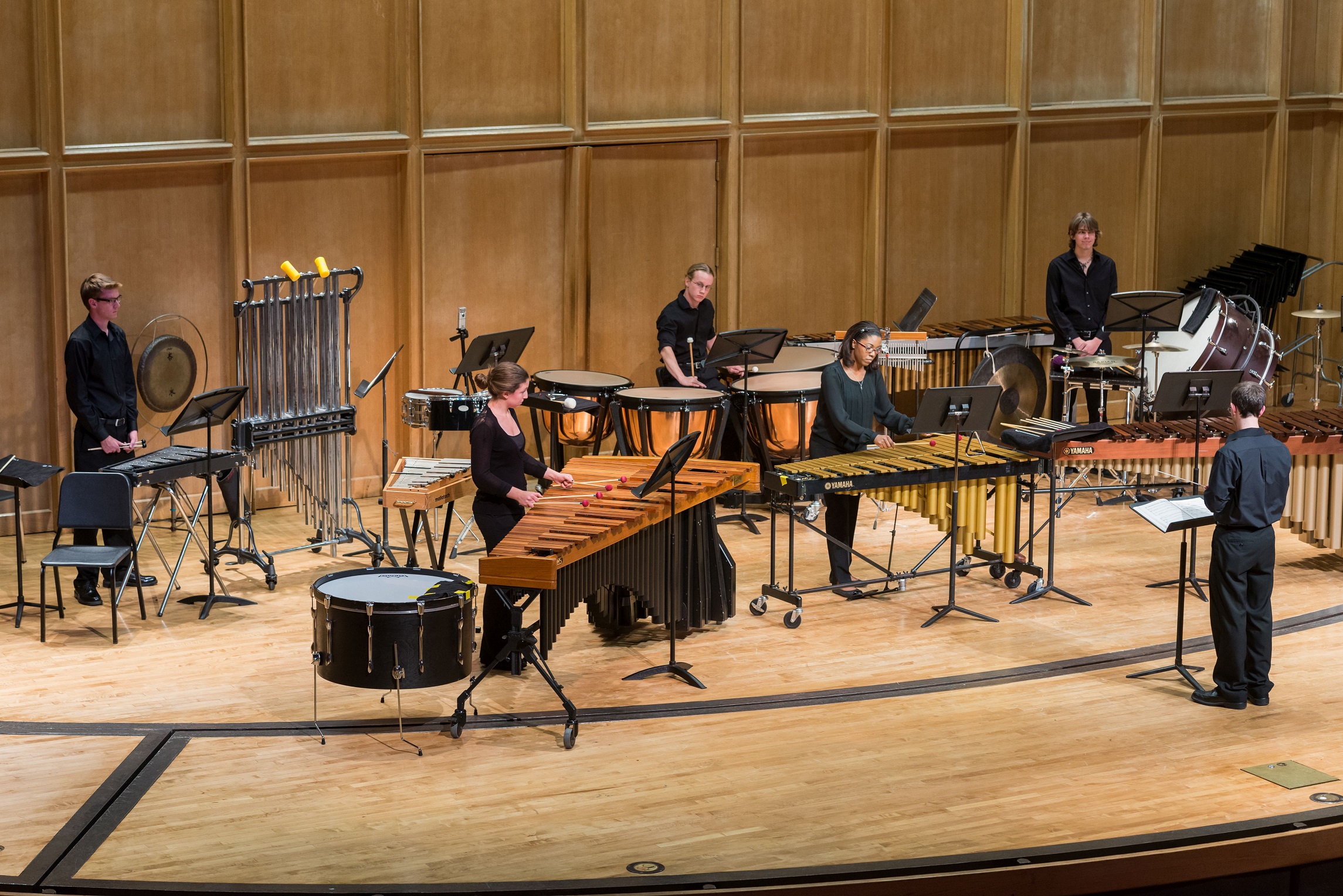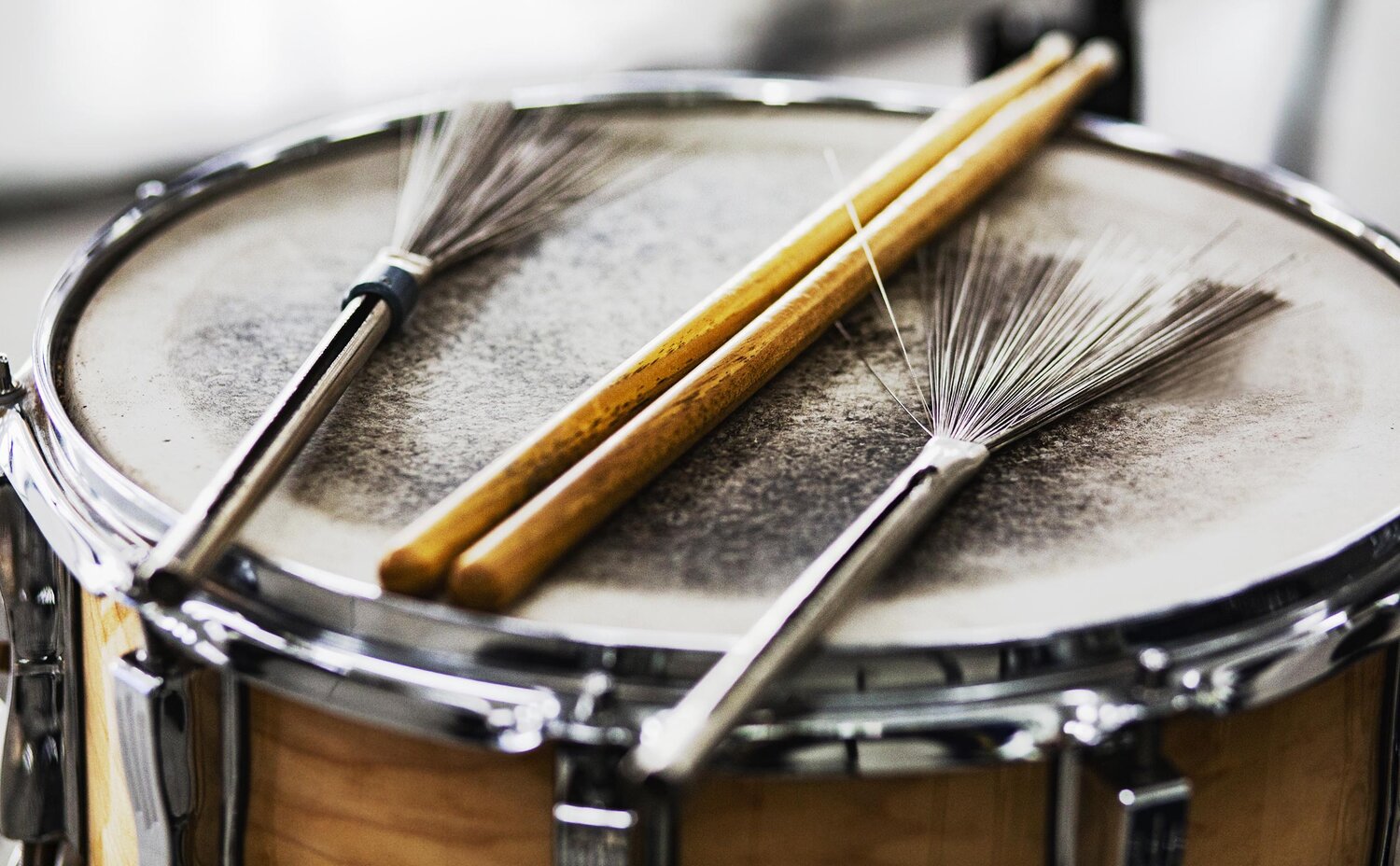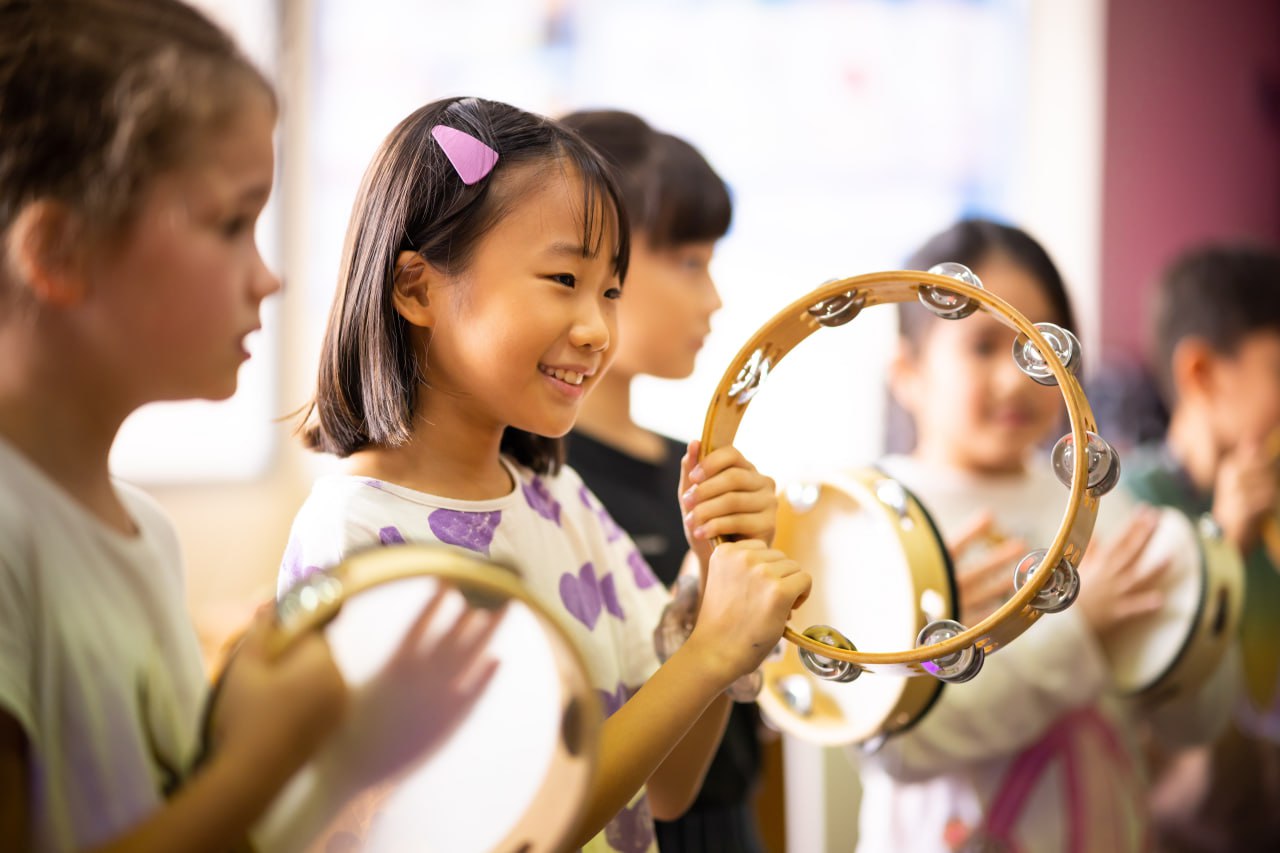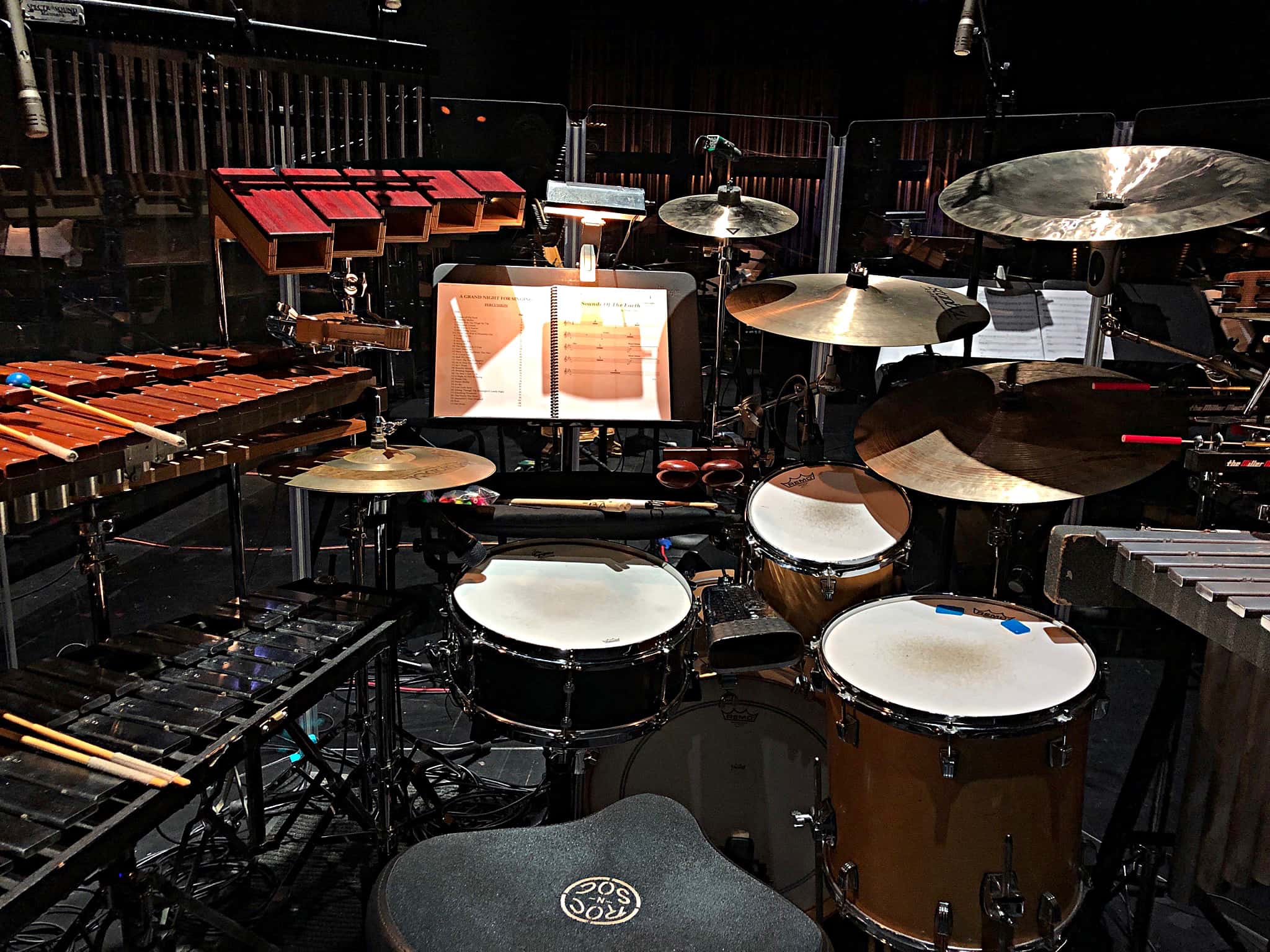Home>Instruments>Percussion Instruments>What Is The Purpose Of Percussion Instruments In Music


Percussion Instruments
What Is The Purpose Of Percussion Instruments In Music
Published: January 16, 2024
Discover the purpose of percussion instruments in music and how they add rhythm and texture to compositions. Explore the versatile world of percussion instruments and their impact on musical performances.
(Many of the links in this article redirect to a specific reviewed product. Your purchase of these products through affiliate links helps to generate commission for AudioLover.com, at no extra cost. Learn more)
Table of Contents
Introduction
Percussion instruments play a vital role in the world of music. From the thunderous beats of drums to the delicate tinkling of a xylophone, these instruments add rhythm, texture, and emotion to musical compositions. Percussion instruments have a rich history that spans across cultures and genres, making them an integral part of musical ensembles in various traditions.
Defined as instruments that produce sound through being struck, shaken, or scraped, percussion instruments encompass a wide range of instruments. They can be categorized into two main types: pitched percussion and unpitched percussion. Pitched percussion instruments, such as the marimba or timpani, produce specific musical notes, while unpitched percussion instruments, such as the snare drum or cymbals, create non-specific sounds.
Throughout history, percussion instruments have held a prominent position in music. In ancient civilizations, drums were used during religious rituals and ceremonies, while in traditional folk music, percussion instruments provided the rhythmic foundation for dances and celebrations. Over time, these instruments became more sophisticated, with new designs and materials being introduced.
Today, percussion instruments are seen in a wide variety of musical genres, from classical orchestras to jazz ensembles and rock bands. They serve several important purposes in music, including contributing to the rhythmic structure, adding dynamic and expressive elements, enhancing the texture and overall sound of a composition, and fulfilling compositional and arrangement functions.
In this article, we will explore the purpose of percussion instruments in music, diving into how they contribute to the overall musical experience. We will delve into the historical background of percussion instruments, examine their role in rhythm and tempo, dynamics and articulation, textural enhancement, and expressive and emotional effects. Lastly, we will explore how percussion instruments play a crucial role in compositional and arrangement functions.
So, let’s embark on a rhythmic journey and discover the fascinating world of percussion instruments, their significance, and their impact on the art of music.
Definition of Percussion Instruments
Percussion instruments can be defined as a category of musical instruments that produce sound through being struck, shaken, or scraped. Unlike other instruments that create sound through vibrating strings or columns of air, percussion instruments rely on physical impact to produce their distinctive sounds.
These instruments come in a wide variety of shapes, sizes, and materials, each with its own unique sound characteristics. Some common examples of percussion instruments include drums, cymbals, tambourines, maracas, xylophones, gongs, and timpani.
What sets percussion instruments apart is their ability to produce both pitched and unpitched sounds. Pitched percussion instruments, such as the xylophone, vibraphone, and timpani, are designed to produce specific musical notes. They have tuned elements, such as keys or heads, which can be struck to produce different pitches. On the other hand, unpitched percussion instruments, like the snare drum, bass drum, and cymbals, produce non-specific sounds that add texture and rhythm to a musical piece.
Percussion instruments can also be further classified into different subcategories based on their method of sound production. Membranophones, such as drums and timpani, have a stretched membrane or skin that vibrates when struck. Idiophones, such as bells and cymbals, produce sound through the vibration of the entire instrument itself. Chordophones, such as the harp or piano, are also considered percussion instruments as they have strings that are struck to produce sound. Finally, aerophones, such as the pipe organ, include instruments that use air to create sound through percussion mechanisms.
The diversity and versatility of percussion instruments make them an essential part of musical ensembles across various genres and cultures. Whether it’s the thundering beats of a drum set in a rock band, the complex rhythms of a jazz drum kit, or the precise strikes of timpani in an orchestra, percussion instruments are capable of creating a wide range of sounds and emotions.
Overall, percussion instruments contribute to the rhythmic foundation, texture, dynamics, and expressive elements of musical compositions. They provide a captivating and vital element to the world of music, adding depth and character to any ensemble or performance.
Historical Background of Percussion Instruments in Music
Percussion instruments have a rich and diverse history that dates back to ancient civilizations. They have played a significant role in music across different cultures and have evolved over time as various societies developed new techniques and materials.
The origins of percussion instruments can be traced back to prehistoric times when early humans used natural objects such as stones, bones, and shells to create rhythm and sound. These early forms of percussion were likely used in communal rituals, celebrations, and communication.
In ancient civilizations, percussion instruments held a prominent place in music. In Egypt, for example, wall paintings from around 3000 BCE depict musicians playing drums, tambourines, and sistrums. These instruments were not only used for entertainment purposes but also had religious and ceremonial significance. Similar uses of percussion instruments can be found in ancient Mesopotamia, Greece, Rome, and other cultures around the world.
As societies developed and musical traditions evolved, the design and construction of percussion instruments became more sophisticated. The Middle Ages saw the emergence of various types of drums, including the snare drum, bass drum, and timpani. These instruments became integral components of military bands, religious ceremonies, and theatrical performances.
In the Renaissance period, percussion instruments continued to evolve. The addition of cymbals, tambourines, and bells brought new dimensions to musical compositions. Composers like Giovanni Gabrieli and Michael Praetorius incorporated percussion instruments into their works, adding excitement and dramatic flair to their compositions.
The Baroque era witnessed the development of more specialized percussion instruments, such as the xylophone, marimba, and glockenspiel. These instruments expanded the tonal palette and added melodic elements to the percussion section. Composers like Johann Sebastian Bach and Antonio Vivaldi integrated these instruments into their orchestral and chamber music compositions.
During the 19th and 20th centuries, percussion instruments continued to evolve and gain prominence. The Industrial Revolution brought advancements in manufacturing, allowing for the creation of more refined instruments with improved sound quality. In orchestras, percussion sections grew in size and complexity, featuring a wide range of instruments such as triangles, tubular bells, and vibraphones.
With the rise of jazz and popular music in the 20th century, percussion instruments took on new roles. Drum sets became the foundation of rhythm sections, driving the energy and groove in bands. Percussion instruments were embraced for their improvisational potential, adding texture and color to musical arrangements.
Today, percussion instruments can be found in a myriad of musical genres and cultures. They continue to evolve and push the boundaries of sound, with new instruments and techniques constantly being developed. The historical legacy of percussion instruments in music serves as a testament to their enduring presence and their fundamental role in creating rhythm, texture, and emotion.
Role of Percussion Instruments in Music
Percussion instruments play a crucial and multifaceted role in the world of music. They contribute to the overall structure, dynamics, texture, and emotional impact of a composition. Whether it’s providing a rhythmic foundation, adding expressive elements, enhancing textural complexity, or fulfilling compositional functions, percussion instruments are integral to the musical experience.
One of the primary roles of percussion instruments is to establish and maintain a steady rhythm. They provide the pulsating heartbeat that drives a musical piece and helps to synchronize the performers. Percussion instruments like the bass drum, snare drum, and hi-hat in a drum set, or the timpani in an orchestra, create a strong rhythmic foundation upon which other instruments can build and interact.
Percussion instruments also contribute to the dynamics and articulation of a musical composition. Through techniques such as accents, rolls, and staccato hits, percussionists can add intensity, emphasis, and variation to the sounds they produce. By manipulating the timbre and volume, they can create tension, excitement, or subtlety, depending on the desired effect.
Another important role of percussion instruments is to enhance the texture of a musical arrangement. They add layers of sound, creating depth and complexity. The combination of different percussion instruments, such as the cymbals, shakers, and tambourine, can create a rich and varied sonic palette. Percussion instruments can also provide contrasting timbres and rhythms, adding interest and maintaining the listener’s engagement.
Percussion instruments are capable of conveying powerful emotions and expressions. The thunderous beats of a drum, the gentle chimes of a xylophone, or the shimmering crash of cymbals can evoke a wide range of feelings. Percussionists use their skill and technique to deliver nuanced performances, adding intensity, energy, and even subtlety to a musical piece.
In addition to their rhythmic, dynamic, and textural roles, percussion instruments serve important compositional and arrangement functions. Composers rely on percussion instruments to create specific effects, transitions, or highlights within a piece of music. They may use percussive hits to mark important moments or to punctuate sections. Percussion instruments can also be used to signal changes in mood, tempo, or key, providing structural markers within a composition.
Overall, the role of percussion instruments in music is multifaceted and essential. They provide the heartbeat, texture, dynamics, and emotions that bring a musical composition to life. Whether it’s in an orchestral setting, a band, or even solo performances, percussion instruments contribute to the overall musical experience, ensuring that the rhythm is felt, the emotions are conveyed, and the composition is enriched.
Rhythm and Tempo
One of the primary functions of percussion instruments in music is to establish and maintain rhythm and tempo. Percussion instruments provide the rhythmic foundation upon which other instruments build and interact, creating a cohesive and synchronized musical experience.
The rhythmic patterns created by percussion instruments serve as the heartbeat of a composition, dictating the overall pace, energy, and flow. They provide a sense of structure and drive, keeping the performers in sync and the listeners engaged.
Drums, in particular, play a vital role in establishing rhythm. The bass drum, snare drum, and hi-hat in a drum set, or the timpani in an orchestra, provide the strong downbeats and accents that anchor the music. These instruments give a sense of pulse and groove, allowing other instruments to play off of and complement the rhythm.
Percussion instruments also play a significant role in varying the tempo of a musical composition. By altering the speed of their strikes or rhythms, percussionists can create accelerandos (increasing tempo) or rallentandos (decreasing tempo), adding dynamic and expressive elements to the music. These changes in tempo contribute to the overall emotional impact and intensity of the performance.
In addition to establishing rhythm and tempo, percussion instruments can introduce rhythmic variations and patterns that add complexity and interest to a composition. Instruments like the tambourine, shakers, cowbells, or clave provide syncopated rhythms, cross-rhythms, or polyrhythms, creating layers of rhythmic textures that engage and captivate the listener.
Another aspect of percussion instruments’ role in rhythm and tempo is the ability to provide accents and syncopation. Percussionists can emphasize specific beats or notes within a musical phrase, adding emphasis or creating rhythmic tension. Syncopated rhythms, where the emphasis falls on unexpected beats, can add groove and excitement to a composition, creating a sense of forward momentum.
Overall, percussion instruments are essential for establishing and maintaining the rhythm and tempo of a musical piece. Their ability to create rhythmic patterns, vary tempo, introduce rhythmic variations, and provide accents and syncopation contributes to the overall rhythmic structure and energy of a composition.
By working in harmony with other instruments, percussion instruments ensure that the rhythm is felt and followed, enhancing the musical experience and creating a captivating and cohesive performance.
Dynamics and Articulation
Percussion instruments play a crucial role in shaping the dynamics and articulation of a musical composition. They have the ability to add intensity, expressiveness, and nuance through their unique sound characteristics and techniques employed by percussionists.
One aspect of percussion instruments’ contribution to dynamics is their ability to produce a wide range of volume levels. From the soft taps on a triangle to the thunderous crashes of cymbals, percussion instruments offer a spectrum of dynamic possibilities. Percussionists can manipulate the force, speed, and placement of their strikes to achieve desired levels of volume and intensity.
Articulation refers to how a note is attacked or released. Percussion instruments offer a variety of articulation techniques that can dramatically impact the overall sound and feel of a composition. For example, the sharp and crisp attack of a snare drum strike or the gradual decay of a cymbal crash can add distinct textures and accents to the music.
Percussionists can achieve different articulation effects through techniques such as rim shots, rolls, flams, and mallet dampening. These techniques allow for precise control over the attack, sustain, and decay of the sound produced, providing a wide arsenal of expressive possibilities.
Furthermore, percussion instruments enable percussionists to create unique sounds and effects through extended techniques. These techniques involve unconventional ways of playing the instrument, such as scraping, rubbing, or shaking. For example, a drumstick dragged across the surface of a cymbal can produce eerie and ethereal sounds, while shaking a tambourine creates a shimmering and rattling effect.
Percussion instruments also contribute to the overall articulation of a musical composition through accents and syncopated rhythms. By using accents, percussionists can emphasize specific beats or notes, creating moments of heightened intensity and impact. Syncopated rhythms, where the emphasis is placed on unexpected beats, can add a sense of syncopation and rhythmic complexity.
In addition to traditional percussion instruments, electronic percussion instruments and sampled sounds have further expanded the possibilities in dynamics and articulation. These instruments can produce a vast array of sounds, from realistic imitations of acoustic instruments to unique synthesized tones, allowing for even more expressive and creative possibilities.
Overall, percussion instruments bring a dynamic and expressive dimension to music through their ability to shape dynamics and articulate notes. Whether it’s through controlling volume, employing various articulation techniques, using extended techniques, or creating accents and syncopations, percussion instruments play a vital role in adding depth, intensity, and expressive elements to the overall musical performance.
Textural Enhancement
Percussion instruments provide a significant contribution to the textural richness and complexity in music. They add layers of sound, creating depth and variety, while interacting with other instruments to create intricate musical textures.
One way percussion instruments enhance texture is through different timbral qualities. Each percussion instrument has its own distinct sound character due to its construction, material, and playing technique. Instruments such as the snare drum, marimba, and cymbals have unique timbres that can be easily distinguished in an ensemble. The combination of these diverse timbres adds color and variety to the overall sound.
Percussion instruments also contribute to the textural enhancement through the use of rhythmic patterns and ostinatos. These repeated rhythmic motifs help establish a strong foundation and create a cohesive texture. For example, the steady rhythm of a tambourine shake or the pulsating pattern of a cowbell adds rhythmic interest and depth to the ensemble sound.
In addition to the rhythmic elements, percussion instruments offer a wide range of pitch possibilities. Pitched percussion instruments like the xylophone, vibraphone, and glockenspiel can perform melodic lines within a composition, adding a melodic layer to the texture. This melodic component combined with other instruments in the ensemble enriches the overall sonic landscape.
Percussion instruments also add textural complexity through their ability to create different sonic effects. Instruments like the triangle, chimes, or wind chimes produce metallic, shimmering sounds that can cut through the texture and add a sparkling quality. Other instruments like the rainstick or thunder tube create atmospheric and ambient textures, evoking various natural elements and adding a sense of depth and space to the music.
Furthermore, percussion instruments contribute to the textural enhancement through their interaction with other instruments in an ensemble. They provide a rhythmic framework with which other instruments can engage, playing off one another and creating intricate interplay. The combination of different percussion instruments with other sections of an orchestra or band can create contrasting textures, layering of rhythms, and complexity.
Percussion instruments also have the ability to create unique textural effects through extended techniques. Techniques such as glissandos, mallet rolls, or flutter-tonguing on wind instruments offer additional sonic layers and textural variations. These techniques, when combined with percussion instruments, expand the range of textures available, making the music more diverse and engaging.
Overall, percussion instruments play a crucial role in enhancing the texture of a musical composition. Through various timbral qualities, rhythmic patterns, pitch possibilities, sonic effects, and interaction with other instruments, percussion instruments contribute to the overall depth, complexity, and richness of the sound, creating a captivating and multi-dimensional musical experience.
Expressive and Emotional Effects
Percussion instruments have the power to evoke strong emotional responses and add a heightened level of expressiveness to music. Their distinctive sounds and playing techniques allow percussionists to infuse their performances with a wide range of emotions, creating a deeper connection with the audience.
One of the ways percussion instruments achieve expressive effects is through the manipulation of dynamics. Percussionists can control the volume, intensity, and sensitivity of their strikes, creating variations in sound that convey different emotions. From soft and delicate touches to powerful and thunderous strikes, percussion instruments can evoke feelings of tranquility, excitement, tension, or even aggression.
Percussion instruments also have the ability to create rhythmic patterns and grooves that elicit emotional responses. A steady and driving beat can generate a sense of energy and uplift the spirits, while intricate and complex rhythms can create a feeling of intrigue and fascination. Percussion instruments can establish a rhythmic foundation that carries the emotional weight of a composition, setting the mood and creating a connection with the listener.
Moreover, percussion instruments offer a variety of timbres and textures that can convey different moods and emotions. The deep and resonant tones of a bass drum can create a sense of power and grandeur, while the shimmering of cymbals can evoke a dreamlike or ethereal atmosphere. Percussion instruments can be used to evoke a wide range of emotions, from joy and celebration to sorrow and introspection.
Extended techniques and unique sounds produced by percussion instruments add further expressive possibilities. Percussionists can explore unconventional playing methods, such as scraping, striking with different parts of the instrument, or using objects to produce specific sounds. These techniques allow for the creation of distinctive and evocative effects that enhance the emotional impact of the music.
Another way percussion instruments contribute to expressive and emotional effects is through the use of accents, rolls, and crescendos. These techniques highlight specific moments in the music, creating dramatic peaks and adding intensity. Percussionists can use these techniques to emphasize climactic moments, evoke a sense of anticipation, or express a sudden shift in emotion.
In addition, percussion instruments can imitate natural sounds, adding an extra layer of emotion and musicality. Instruments like the rainstick, ocean drum, or thunder tube can evoke the sounds of nature, bringing a sense of calm, awe, or even foreboding to the music. These imitations can transport the listener to different environments and evoke a visceral emotional response.
Overall, percussion instruments have a profound impact on the expressiveness and emotional depth of music. Through control of dynamics, rhythmic patterns, timbral qualities, extended techniques, and imitations of natural sounds, percussionists bring a heightened level of emotion to a composition. They have the power to move and captivate the listener, creating an immersive and deeply felt musical experience.
Compositional and Arrangement Functions
Percussion instruments serve important compositional and arrangement functions in music. Composers and arrangers make deliberate choices when incorporating percussion instruments, considering their unique sound qualities and their ability to shape the overall structure, texture, and dynamics of a composition.
One of the compositional functions of percussion instruments is to provide a sense of pulse and rhythmic stability. They establish the underlying rhythm that guides the composition, ensuring that all the instruments and performers stay aligned. The addition of percussion instruments helps to create a solid foundation upon which other elements of the composition can be built.
Percussion instruments also fulfill a melodic role in composition. Pitched percussion instruments, such as the marimba, xylophone, or glockenspiel, allow composers to introduce melodic lines and motifs. These instruments can provide a melodic counterpoint to other instruments or serve as a unifying element within the composition.
Additionally, percussion instruments add instrumental color and textural diversity to a composition. The unique sound qualities of different percussion instruments, such as the deep resonance of a bass drum or the bright shimmer of a tambourine, contribute to the overall timbral richness of the music. Composers carefully select the specific percussion instruments to achieve the desired sonic palette and texture.
Percussion instruments also play a significant role in creating transitions and punctuations within a composition. They can mark the beginning or end of a section, provide accents or cues for other instruments, or create dramatic moments of impact. Percussion instruments have the ability to add excitement and create focal points, guiding the listener’s attention and shaping the overall form of the piece.
Furthermore, percussion instruments bring a sense of energy and rhythm to an arrangement. In genres such as jazz, Latin, or pop, percussion instruments like the drum set or congas drive the groove, creating a rhythmic foundation that propels the music forward. They provide a framework upon which other instruments can interact and improvise, contributing to the overall dynamic and lively feel of the arrangement.
Percussion instruments also offer opportunities for improvisation in arrangements. Percussionists can add their own creative touches, incorporating fills, solos, or embellishments into the composition. This improvisational element adds spontaneity and individual expression to the overall arrangement, enriching the musical experience for the performers and the audience.
Furthermore, percussion instruments can be used to evoke specific cultural or stylistic elements. Different percussion instruments are associated with particular genres or traditions, and their use creates a distinct identity and flavor in the arrangement. Whether it’s the driving rhythms of African drumming, the syncopated grooves of Latin percussion, or the inventive patterns of electronic percussion, these instruments provide a connection to specific musical traditions and genres.
In summary, percussion instruments fulfill crucial compositional and arrangement functions in music. They contribute to the overall rhythmic structure, add melodic elements, create instrumental color and textural diversity, punctuate transitions, drive the groove, provide opportunities for improvisation, and evoke specific cultural or stylistic elements. Through careful selection and integration, percussion instruments shape the composition’s form, expressiveness, and overall impact.
Conclusion
Percussion instruments play a vital and multifaceted role in the world of music. From establishing rhythm and tempo to adding expressiveness, enhancing texture, and fulfilling compositional functions, percussion instruments contribute significantly to the overall musical experience.
Throughout history, percussion instruments have evolved and adapted, becoming more sophisticated in design and technique. From ancient civilizations to modern-day compositions, percussion instruments have demonstrated their versatility and ability to transcend cultural boundaries.
One of the key contributions of percussion instruments is their ability to establish and maintain a steady rhythm. They provide the rhythmic foundation that allows other instruments to build upon and interact with, creating a cohesive and synchronized musical performance.
Percussion instruments also add expressive and emotional elements to music. Through dynamics, articulation, and unique sound qualities, they elicit a wide range of emotions, connecting with listeners on a deep level. Percussionists have the power to shape and convey the emotional narrative of a composition, adding intensity, nuance, and drama.
The textural enhancement provided by percussion instruments adds depth and complexity to musical arrangements. Through varied timbres, rhythmic patterns, and interaction with other instruments, percussion instruments create layers of sound and contribute to an immersive sonic experience.
Furthermore, percussion instruments play an important role in the composition and arrangement of music. Composers carefully select percussion instruments to provide rhythmic stability, melodic elements, and instrumental color. Percussion instruments contribute to the overall form, transitions, and dynamics of a composition, guiding the listener through the musical journey.
In conclusion, percussion instruments are an integral part of the musical landscape. Their rhythmic foundation, expressive qualities, textural enhancement, and compositional significance make them indispensable in various genres and cultures. Whether in classical orchestras, jazz ensembles, or rock bands, percussion instruments captivate audiences and add depth and excitement to the music. They continue to evolve and inspire, pushing the boundaries of sonic possibilities, and ensuring that the world of music remains vibrant, dynamic, and engaging.











